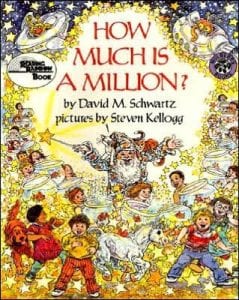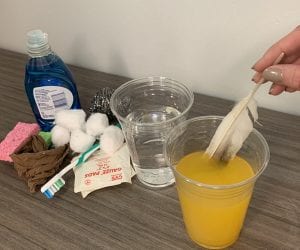In school districts across the country, STEM curriculum is being expanded into STEAM, with “art and design” added in as a related field. STEAM aims to dispel the idea that arts and technology are disconnected. Making technical information aesthetically interesting can make that information more accessible, or generate insights from connections made through a new presentation.
Data can also be a vehicle for creative expression in the classroom. Students who find data analysis challenging may find the arts as a useful method of representation. By exploring information through art, students can learn to approach numbers from different angles and form deeper connections and understandings. As an added bonus, integrating art and data analysis compliments the Next Generation Science Standards (NGSS), which emphasize modeling and representations as a key aspect of science education at all grade levels.
How Can Art be Used to Express Data?
At Data Culture Project, educators teach students to build three-dimensional data sculptures. Students are provided with a simple set of data (such as a population pyramid) and a variety of art supplies. Students then “think with their hands” and make sculptures that represent data through any form that appeals to them. In a follow-up discussion, students have the opportunity to explain to their classmates how their sculptures represent the data from the lesson. The Data Culture Project also features an activity about remixing infographics, where participants take the information from an infographic and display it in a new way.
Data representation can also extend into other parts of the arts. Ecologist Lauren Oakes used data about tree loss in the Alaskan Alexander Archipelago as the basis for music. Oakes assigned each species of tree to an instrument and used the characteristics of individual trees to shape each note, creating a song that tells the story of the forest. Artist Natalie Miebach accomplished something similar when she took data about weather systems and used it to create music for a string quartet. Educators at Eastern Washington University created an interactive web page where students can upload their own data sets or use pre-existing sets like the Fibonacci sequence to explore what data sounds like when interpreted as music.
3 New STEAM Ideas for Your Classroom
PopEd lessons using real-world data can easily be adapted to integrate artistic explorations of what that data means.
1. In the elementary/middle school lesson Stork and the Grim Reaper, students add and remove water from a bowl to observe the impacts of birth and death rates on populations. In the follow-up activity, students are challenged to explore alternative ways to represent data from the lesson. Examples in the lesson plan include physical movement and three-dimensional modeling, but students could create any visualization that shows the relationship between birth and death rates.
2. In Waste A-Weigh, elementary school students employ strategies to reduce lunch-time waste, and measure their waste each day for a week to see how successful they’ve been. The trash that students accumulate would provide excellent material for data sculptures – a visually appealing way to showcase students’ waste reduction data.
3. Population Circle asks middle school students to demonstrate global population growth by adding more and more people into a circle. Students later take this same data and use it to construct a line graph. Because the data visualization in this activity is done through physical movement, students could explore alternate ways to make the data come alive through performance, music, or visual art in order to communicate the same information.




